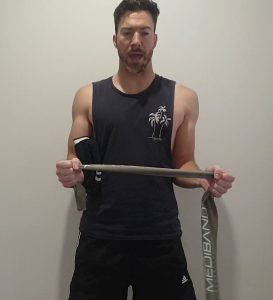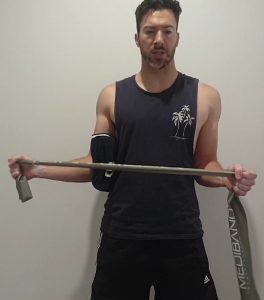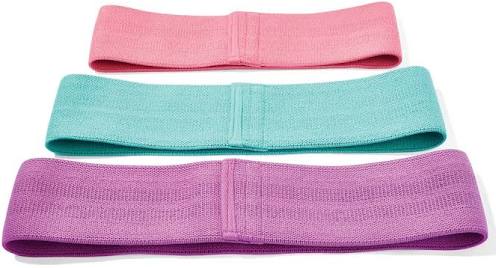Believe it or not, if you are looking for just one piece of exercise equipment to buy for the rest of your life, it should be a set of resistance bands!
Resistance bands are an incredibly useful tool and I love using them in different ways depending on the setting/purpose for your exercise; the beauty of the band being that instead of working against “gravity x weight” we can be very specific and work against the resistance of the band in whatever direction you place it in!
The two main settings that we recommend resistance bands for are EXERCISE and REHAB.
When using resistance bands for exercise, they are incredible for warm up exercises as they help isolate and target specific muscle groups. A great example of this is the clam-shell exercise, which can be done for both rehab and building muscle, that primarily targets our middle glutes (gluteus medius) for a well rounded glute workout and/or to provide stability to the hips. They can also be used to stimulate the muscles that control your posture so that we can reverse the effect of being hunched in front of the computer, slouched in the car or doing physical labour all day.
When resistance bands are used for rehabilitation programs, their role is to provide focused resistance in a specific range of strengthening to balance our muscular ability. A great example of resistance band use for rehab is after a shoulder injury; a large percentage of patients require specific strengthening of the stabilizing muscles of the shoulder, known as the Rotator Cuff muscles. Smaller, controlled movements (such as the door-opening exercise shown below by Dr Sean) using the resistance band are great for targeting the major rotator cuff muscles and building the strength and endurance of the shoulders.
 |
 |
Resistance bands can also be an incredible tool for working out whilst on the road or if you are unable to get to your regular gym workout. Being lightweight and taking up such a small space, they pack into bags so easily and if you have a few types/strengths of band you can do a full-body workout with only a few pieces of equipment. We advise you to look at getting a single length of band at a couple of different levels of resistance for the upper body, as well as a looped-band (preferably the fabric-type instead of the rubber ones) at a medium-heavier resistance for your leg workouts.
Whether you are looking at resistance bands for rehab or for exercise, they are a versatile addition to your home (or travel bag) that can be used for an enormous variety of strengthening movements. Please remember, when using the bands for rehab to start LIGHTER and work your way up (we want to build amazing control, rather than just pumping out poor-quality reps).
If you’re interested in how you might implement a resistance band exercise into your regular workouts, it’s best to ask your chiropractor to recommend some exercises that target your weaker areas first – this way you can efficiently build some balanced strength enhance your ability to exercise with confidence.
Kind Regards,
Dr Sean Laurie B.Sc(Chiro), B. Chiro
Chiropractor



